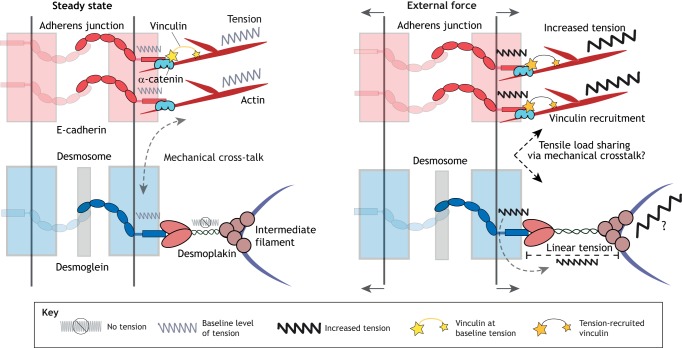Fig. 4.
Contributions of junctional and cytoskeletal proteins to cellular mechanics. At steady state (left), F-actin and the associated classical cadherins are under a baseline level of tension at the adherens junction. In addition, at steady state, desmosomal cadherins are under low tension, while desmoplakin experiences little to no tension. It is not known why the low tensile forces on desmosomal cadherins fail to be propagated to the IF cytoskeleton, but this could be explained through a mechanical crosstalk with the tensile F-actin-based adhesive system. When an external force is applied (right), the tensile load is shared between adherens junctions and desmosomes. Increased tension is ‘felt’ by the classical cadherins and F-actin at the adherens junction, leading to increased recruitment of vinculin, thereby facilitating mechanotransduction. When an external force is applied, the desmosomal cadherins propagate tensile forces to desmoplakin and potentially the IF network in order for cells and tissues to resist large mechanical loads.

